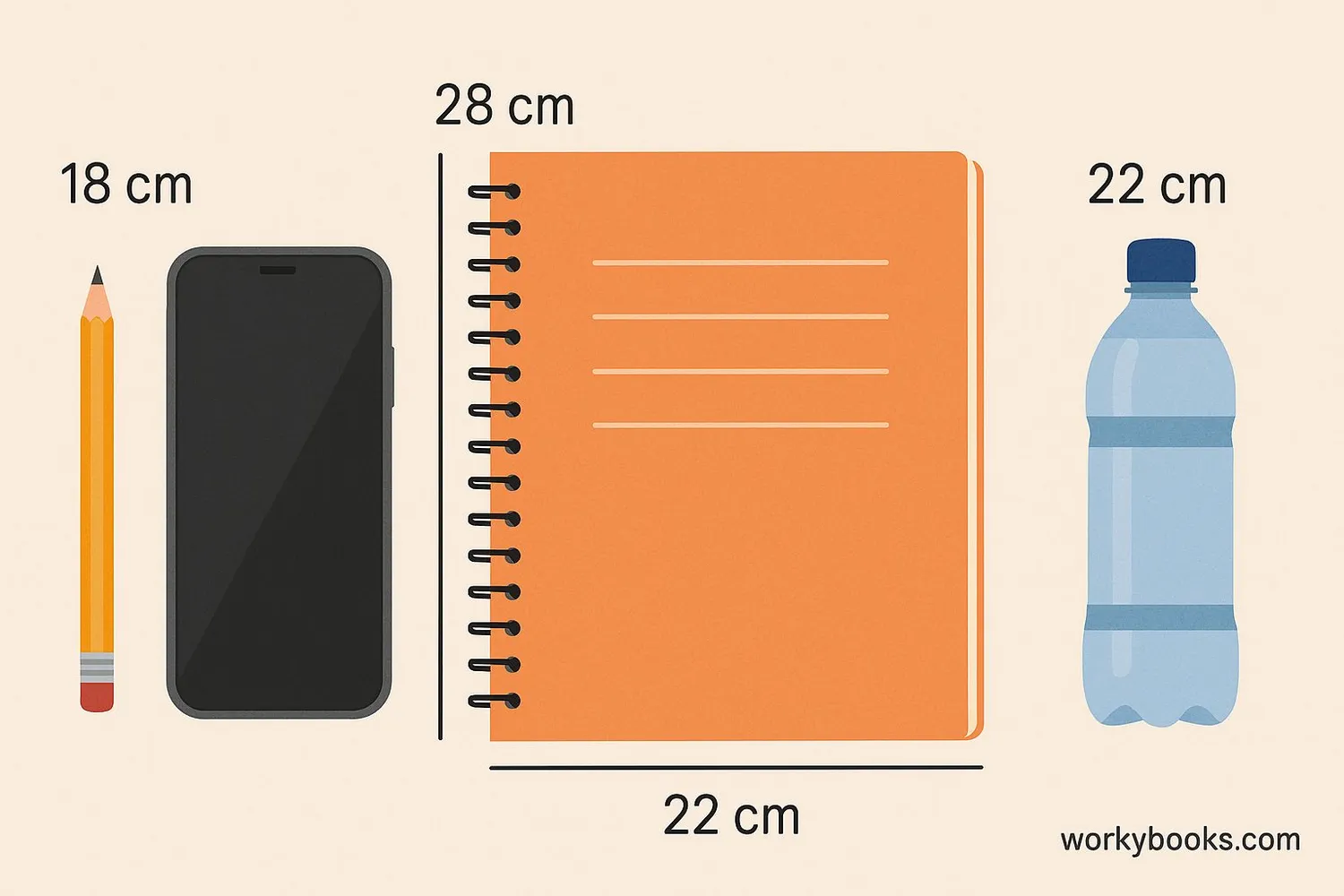Understanding Centimeters - Definition, Examples, Quiz, FAQ, Trivia
Learn about the metric unit of measurement with easy explanations, examples, and activities
What is a Centimeter?

A centimeter (cm) is a unit of length in the metric system. It's about the width of a large paperclip or the size of your fingernail.
Centimeters are used to measure smaller lengths and distances. There are 100 centimeters in one meter, which is about the height of a doorknob from the floor.
The word "centimeter" comes from the Latin words "centum" meaning hundred and "metrum" meaning measure. So centimeter literally means "hundredth of a meter."
Key Concept
1 meter = 100 centimeters. This relationship helps us convert between different metric measurements.
Centimeter Conversions

Centimeters can be converted to other units of measurement. Here are the most common conversions:
Conversion Formulas
To convert centimeters to meters, divide by 100
To convert centimeters to inches, multiply by 0.3937
Example 1: Convert 150 cm to meters
Solution: 150 cm ÷ 100 = 1.5 m
Example 2: Convert 25 cm to inches
Solution: 25 × 0.3937 ≈ 9.84 inches
Centimeter Conversion Chart
| Centimeters (cm) | Meters (m) | Inches (in) |
|---|---|---|
| 1 cm | 0.01 m | 0.39 in |
| 10 cm | 0.1 m | 3.94 in |
| 50 cm | 0.5 m | 19.69 in |
| 100 cm | 1 m | 39.37 in |
| 150 cm | 1.5 m | 59.06 in |
| 200 cm | 2 m | 78.74 in |
Remember
When converting to larger units (like meters), the number gets smaller. When converting to smaller units (like millimeters), the number gets larger.
Real-World Examples

Centimeters are all around us! Here are some common objects and their measurements in centimeters:
Example 1: A standard pencil is about 18 cm long
Example 2: Most smartphones are about 15 cm tall
Example 3: A sheet of notebook paper is 28 cm long
Example 4: A standard water bottle is about 22 cm tall
Example 5: Your math textbook is probably about 26 cm tall
Try measuring objects around your home with a ruler to practice using centimeters!
Measurement Tip
When measuring with a ruler, always start at the 0 mark, not the end of the ruler. Hold the ruler flat against what you're measuring.
Centimeter Practice Quiz
Test your knowledge about centimeters with this 5-question quiz. Choose the correct answer for each question.
Frequently Asked Questions
Here are answers to common questions about centimeters:
Measurement Trivia
Discover interesting facts about measurement systems:
Origin of the Centimeter
The centimeter was first introduced during the French Revolution as part of the metric system. It was defined as one hundredth of a meter, which was originally based on the Earth's circumference.
Global Standard
Over 95% of the world's population uses the metric system with centimeters. Only three countries (United States, Liberia, and Myanmar) haven't officially adopted the metric system.
Space Measurement
NASA uses metric measurements for all its space missions. The Mars Climate Orbiter was lost in 1999 because one engineering team used metric units while another used imperial units.
Smallest Measurement
Scientists can measure things much smaller than a centimeter. A nanometer is one billionth of a meter - about 100,000 times smaller than the width of a human hair!


